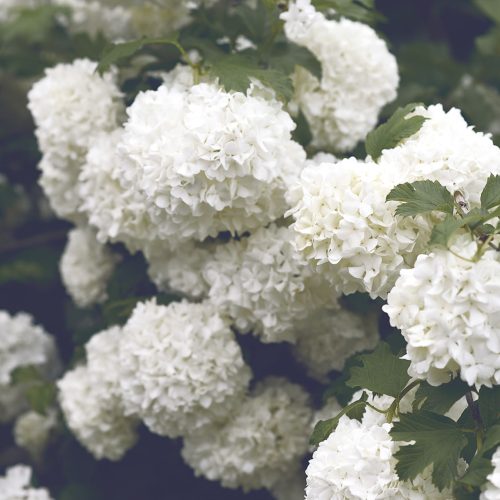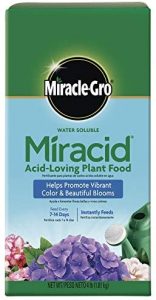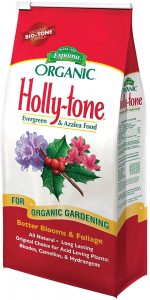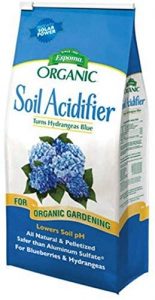We live in a modern society where agriculture thrives and is one of the backbones of any nation. There is something that helps agriculture thrive. Some may call it a game-changer. Fertilizer has existed in various forms throughout various ages and generations.
As stated earlier, fertilizer is something that has been around for a while now. Its importance in agriculture was first discovered by farmers far back as eight thousand years ago.
We humans and other animals require the necessary nutrients to operate appropriately with our bodies in optimum shape and best health. Well, this also applies to the crops we plant on our farms and gardens. Fertilizer is so vital in agriculture because it serves as food or supplements for our crops.
The importance of fertilizer in farming replenishes all the essential elements that have been taken away from the soil by the crops. Without fertilizers, the harvest of crops by farmers will be on decrease by no tiny feet.
Let us look into them.
4 Best Fertilizer For Hydrangeas Reviews
In this section, you have provided a comprehensive list of the best fertilizer for hydrangeas with their important information. Having a wide array of knowledge on any product you want to purchase will help you choose the proper and best-fit fertilizer for your hydrangeas when the time comes for you to purchase.
1
Miracle-Gro Soluble Acid Loving Plant Food
This kind of fertilizer or plant food is for plants that love soils high in their pH level. These plants include the hydrangea, as it thrives in soils with pH levels less than seven. The Miracle-Gro fertilizer for plants that love acid-based grounds is to be to the hydrangea between two weeks.
It helps the hydrangea experience rich foliage and blossom in breathtaking ways. Since the Miracle-Gro food for acid-loving plants is not organic or means that it has a faster action in terms of how fast it can affect your hydrangea positively.
The Miracle-Gro food for plants that love acid-based soils is not only used for hydrangeas, but it is for all plants that thrive in soils with pH levels less than seven, and some of them include the following plants. Orchids, all types of hibiscus, the various species of Azaleas, Holly, and so on.
Below you will find some of the critical features of these products and other vital details. Anyone looking for some of the best fertilizers for their hydrangea will need to know all these things below.
Key Features:
- The Miracle-Gro fertilizer for plants that love acid-based soil does not only enrich hydrangeas with the proper nutrient that help them reach their optimum potential. It is also for other plants that thrive in soils with pH levels less than seven.
- The Miracle-Gro fertilizer for plants that love acid-based soils is to bring out the rich color of the hydrangea
- The Miracle-Gro fertilizer for plants that love acid-based soil does not cause any form of harm to any plant.
- The Miracle-Gro fertilizer for plants that love acid-based soils does its job very quickly, unlike organic fertilizers. It brings the best results in your hydrangea
- The fertilization schedule for the Miracle-Gro fertilizer for plants that love acid-based soils is convenient. You have to apply only once for every week or two.
Specification:
- Manufacturer: The Scotts Company
- Item weight: 4 pounds
- Model no: 185001
- Product dimensions: 5 x 5 x 10 inches
Pros
- The Miracle-Gro fertilizer for acid-loving plants is easy to apply
- The Miracle-Gro fertilizer for plants that love acid-based soils enriches the plants with beautiful blossoms
- The Miracle-Gro fertilizer for plants that love acid-based grounds is a fast-acting food for hydrangeas
- The Miracle-Gro for plants that love acid-based soils is in high demand hence is in equal supply, so there is availability for the product in stores
Cons
- Miracle-Gro fertilizer for acid-loving plants has a nitrogen level from synthetic ammonium and other water nitrates soluble in water. eventually generates chemicals that are bad for the soil and other life forms in the soil
2
Organic Holly-Tone fertilizer
The Holly-Tone organic fertilizer is one one the best and most popular fertilizers for growing hydrangeas. The Holly-Tone organic fertilizer for plants that love acid. For example, Hydrangeas snd Blueberries, acid-based soils, are soils with pH levels of less than seven.
Farmers and experts commonly use the Holly-Tone organic fertilizer for acid-loving plants throughout the world. It has been tested and proven to be among the best kind of fertilizers used for hydrangeas.
As the name suggests, the Holly-Tone organic fertilizer is organic, meaning that it is from naturally occurring sources and not synthetic sources. Hence it features Bio-Tone microorganisms that are helpful to hydrangeas. Also, a form of build or assembly is needed.
The Holly-Tone organic food for plants is certified for organic farming. Holly-Tone fertilizer is best used during spring and should be applied two times in 45-60 days.
Below you will find some of the critical features of these products and other vital details. Anyone looking for the best-fit fertilizer for their hydrangea will need to know all these things below.
Key Features:
- The Holly-Tone organic fertilizer is for all acid-loving plants
- The Holly-Tone organic fertilizer is from natural sources
- The Holly-Tone organic fertilizer have important Bio-Tone microorganisms
- The Holly-Tone organic fertilizer over time will reduce the pH of the soil hence increasing the acidity for acid-loving plants like hydrangea
Specification:
- Manufacturer: Dramm
- Item weight: 18 pounds
- Model number: HT18
- Product dimensions: 18 x 12 x 2.25 inches
Pros
- The Holly-Tone organic fertilizer has important Bio-Tone microorganisms
- The Holly-Tone organic fertilizer has a long shelve life
- The Holly-Tone organic fertilizer helps your hydrangea to blossom in beautiful colors
- The Holly-Tone organic fertilizer is a balanced fertilizer
Cons
- The Holly-Tone organic fertilizer, when used excessively, will eventually damage the soil and the plant alike.
3
Organic Soil Acidifier Fertilizer
The organic soil Acidifier fertilizer is one of organic make meaning that it is from nature. The organic soil Acidifier is known to be among the best soil acidifiers out there.
The organic soil acidifier also has naturally occurring minerals and elements, which alters soils that are alkaline based by reducing the pH level of that very soil, turning it to be acidic, which is a plus for plants that thrive in acidic soils like the hydrangea.
Farmers, gardeners, and experts commonly use organic acidifiers to turn the color of their hydrangea into color blue. This fertilizer is organic means that it has a lower chance of being harmful to your hydrangea than some other fertilizers of synthetic make.
The synthetically made fertilizer tends to have aluminum sulfate, increasing as you use them. Below you will find some of the critical features of these products and other vital details.
Anyone looking for the best-fit fertilizer for their hydrangea will need to know all these things below.
Key Features:
- The organic soil acidifier reduces the pH level of the soil and makes it acidic for acid-loving plants like the hydrangea
- The organic soil acidifier from natural sources hence does little or no harm to the plant
- The organic soil acidifier fertilizer does its job as quickly as possible
Specification:
- Manufacturer: Espoma
- Item weight: 30 pounds
- Model number: UL30
- Item demensions: 26 x 5 x 12 inches
Pros
- The organic soil acidifier fertilizer is of natural make hence is not toxic even when accidentally overused
- The organic soil fertilizer does an excellent job in creating a beautiful blue blossom for your hydrangea
- The organic soil acidifier has long-lasting abilities
Cons
- Organic soil acidifiers, when used excessively, will lead to low yield for the crops and cutting short vital nutrients for the plants, and elevate the toxicity of the soil that are harmful to plants. But in any case, no fertilizer should be overused. It will be of no good to the plants.
4
Hydrangea Fertilizer by EZ-Gro
This hydrangea fertilizer comes in as Amazon’s top choice for fertilizers for hydrangeas. It is among the best fertilizers for acid-loving plants and has no bad chlorides, which are harmful to hydrangeas.
It is liquid which increases its convenience as it is straightforward to use. This fertilizer also has essential nutrients that are beneficial to hydrangeas. The fertilizer does a beautiful job reducing the soil’s ph level to a comfortable acidic level where plants that love acid-based grounds like hydrangea can thrive.
This fertilizer is mixed with various micronutrients rich and helps the hydrangea produce natural beautiful blue colors.
The hydrangea EZ-gro fertilizer is to be applied in the early hours of the morning and in the late hours of the afternoon. You should avoid using this fertilizer during the hot afternoon. This fertilizer has been tested and proven by Gardners and farmers alike to be one of the best fertilizers for hydrangeas out there.
The hydrangea fertilizer by EZ-gro has been around for the past 40 years and counting.
Below you will find some of the critical features of these products and other vital details.
Key Features:
- The EZ-gro fertilizer is for all plants that love acid-based soils
- The EZ-gro fertilizer has no harmful chlorides
- The EZ-gro fertilizer comes with a free cup meant for measuring
- The EZ-gro fertilizer has a quality packaged micro-nutrient
- The EZ-gro fertilizer is liquid
Specification:
- Manufacturer: EZ-gro Products
- Item weight: 2.26 pounds
- Item dimensions: 5 x 2 x 8 inches
Pros
- The EZ- gro fertilizer is very easy to use
- The EZ-gro fertilizer is known to be highly effective
- The EZ-gro fertilizer has a quality packaged micro-nutrient
Cons
- The EZ-gro fertilizer enables crops to grow well, but it also allows weeds to thrive. Hence will have to clear weeds more often.
Buyers Guide

Fertilizers
Fertilizers can be said to be elements of natural make that are added to all sorts of soil to deliver nutrients to the crops.
Forms
Fertilizers come in different forms, both natural and artificial.
Elements
Fertilizers of recent makeup usually have three essential elements
- Nitrogen
- Potassium
- phosphorus
- dust from rocks for additional nutrients.
Fertilizers in a wide array of ways. Fertilizers can be in their dried form and liquid form. Keep in mind that there are other modes of application besides those mentioned above.
Do I Need to Apply Fertilizer?
As stated above, fertilizer is naturally occurring or artificial. Although farmers have cultivated their crops in time past without fertilizer, it does not repute that fertilizer is absent. Nature will have a hard time trying to replace minerals or nutrients left out of the soil the crops panted.
Occasionally, during plants’ harvesting, essential minerals and nutrients are also sucked out of the ground and the crops. The land would have lost most of its nutrients after the harvesting season and will need to add fertilizers that will improve the quality of the earth. Otherwise, the next farming season will experience a vast decrease in the yielding of crops. Not only do these fertilizers feed the soil and the plants, of course, after harvesting, but it is also going to end up on the tables of man or as food to other animals.
International Fertilizer Association
These fertilizers also carry nutrients that are beneficial to humans and animals alike. It is stated by the International Fertilizer Association, commonly known as the IFA, that a whooping eighty five percent(85%) of soil samples tested all around the world lack the element nitrogen, which is one of the nutrients that aid the healthy growth of plants and plants cannot take this nitrogen from the air.
Hence, their only source of nitrogen is the soil. They also have realized that seventy-three (73%) of these soil samples lack phosphorus while fifty-five (55%) lack potassium.
Potassium: It is found in soil but is way beyond the reach of the roots of the crops. This vital nutrient is almost a kilometer deep in the ground.
Phosphorus: It is also another naturally occurring element in soil but is in specific types of rocks. Crops cannot access these because the crops need to have water solubility. Hence the importance of phosphorus-based fertilizers as crops can extract from the soil.
Types of Fertilizers
Fertilizers come in different forms that best fit the soil they are for. There are four forms or types of fertilizers available for cultivation in agriculture. Any experienced farmer or gardener is well aware of the value that good fertilizers carry.
Being able to identify the type of fertilizer that suits the requirement of specific plants will without a doubt enable your farm or garden to meet its maximum potential. Below are the types of fertilizers out there.
Inorganic and Organically Made Fertilizers
Organic
As the name organic suggests, this type of fertilizer is from organic or naturally occurring sources. These sources primarily have manure, different sorts of composts, and product from animals and plants. This kind of fertilizer is perfect, a typical example of nature doing its thing. They are very nutritious to both the soil and the crops.
Approximates of the nutrient content are usually printed on the sacks because there is no natural way to know the number of nutrients it contains. Because this type of fertilizer is naturally occurring, like most natural things, it takes a while for its effect to show.
Hence is used mainly by farmers to develop rich and healthy soils over long periods. A huge advantage that organic fertilizer carries is that it is made easily in your home.
Inorganic
On the other hand, we have inorganic fertilizers. Inorganic fertilizers have chemicals that have the necessary elements that aid crop growth. Unlike organic fertilizer, if you plan to speed things up In your farm or garden the inorganic fertilizer is your best fit. They are the best if your crops increase.
Nitrogen Fertilizers
The element or nutrient that takes responsibility for the growth of plants is nitrogen. The element nitrogen’s importance in fertilizers is good as it plays a significant role during the mid-stage of the lifespan of different crops.
Nitrogen-based fertilizers are best applied when your crops need to grow healthy and strong and produce new leaves.
Phosphate Fertilizers
The nutrient phosphorus is a requirement for plants all through their life span. The nutrient is responsible for the strengthing of the roots of crops along with their stems. The use of phosphorus-based fertilizers usually gives flowering, the production of seeds, and ultimately fruits a boost.
This nutrient is so necessary that a lack of phosphorus will most likely lead to stunted growth. Like the organic fertilizer, the phosphate fertilizer also works overtime hence is not a bad idea to apply it to your soil to enrich it before you plant your crops.
Potassium Fertilizers
The nutrient responsible for making your crops develop deeper, healthier, and more robust roots is known as potassium. Potassium is an essential nutrient because it enables your crops to thrive even when they lack other nutrients. Potassium is also crucial in the process of photosynthesis. Potassium-made fertilizers can also reduce the speed or completely kill any form of plague that may affect your farmland garden.
During the application of potassium fertilizers, it is advisable to apply them near the roots of the plants. Lack of potassium in your crops will lead to a decolorization at the leaves’ edges and ultimately die if it persists.
Forms of Fertilizers
The above types of fertilizers are made in various forms
- the powder form
- the liquid form
- the grounded form, also known as the granular form
The Powder Form
The fertilizer of powdered form has a water requirement to enable its productivity and is by using your hands. Water is necessary to aid absorption.
The Liquid Form
The liquid fertilizer is quite similar to water on your farm, making it very convenient because a hose can use it, just like the powder fertilizer, the granular to the surface of the soil.
The Granular Form
The granules are rich in nutrients and hence will eventually be absorbed by the ground as soon as you water the plant. Fertilizers are vital add-ons in modern farming.
What Are Hydrangeas?
Where Are Hydrangeas Found?
The hydrangea, commonly known as hortensia, is a flowering plant with origins in Asia and the Americas. It is known to be one of the most prominent species in diversity in the eastern part of Asia.
What Do They Look Like?
They are primarily trim shrubs with an average length of about one to three(1-3) meters in height. These species vary because some grow up to thirty meters as climbers, so climb along with trees. They are also known to be quite tasty. They are also beautiful plants as their colors vary from pink to blue alongside other shades of purple, which makes them stand out.
Hydrangeas With Fertilizers
Hydrangeas thrive very well when so long as the proper fertilizers in times like summer. It is advisable to use the grounded type of fertilizer or granular fertilizer rich in phosphorus. Hydrangeas are known to react very positively to Holly-tone fertilizers because hydrangeas love acid-based fertilizers. Fertilizers best used for blue hydrangeas are the Vitax Conifer alongside the shrub fertilizer.
Homemade Fertilizer
While it is good to purchase some of these fertilizers from these companies, you can also make your fertilizer in your home, known as homemade fertilizer. Making this homemade fertilizer for hydrangeas is as simple as adding a small amount of vinegar to the plant’s root, a rich form of potassium, and other elements like phosphorus.
Phosphorus increases the acidic content of the soil, which is a favorite for hydrangeas.
Hydrangeas’ Colors
Hydrangeas’ colors are affected by the nature of the ground planted in, except those that blossom white or green. Those are the main colors that the heart of the soil can not alter. Blue hydrangea indicates the level of acidity of the ground, just as a soil base in nature will change the color of the hydrangeas to pink.
To further analyze the soils that change the color of the hydrangeas, various grounds with an average pH of 5.5 and less are acidic, hence changing the color of the hydrangeas to blue. Those with an average pH of 7.0 and above are said to be base or alkaline in nature and will turn the color of the hydrangeas into pink.
Hydrangea Species
As stated above, hydrangea comes in various forms and species. One of them is known as the limelight hydrangea. This kind of hydrangea is to be fertilized by the Pennington UlttraGreen All-purpose plant food. Another kind of fertilizer that is good for your hydrangea plant is the miracle glow fertilizer for hydrangea. Fertilize the soil below the hydrangea.
Hydrangeas are to be fertilized during spring, as that’s when the plants begin to blossom. Hence it gives the plant a head start. Some hydrangea farmers are known to add coffee grounds as fertilizer for their hydrangea plants. Experienced farmers also use coffee grounds to combat the growth of unwanted crops or weeds in their gardens. Coffe ground fertilizer for hydrangea for the soil’s surface, or you can mix it in a compost bin hence using it all at once.
Check out our articles on Gardening for all the insights you need to have the garden of your dreams.
FAQs
In this section, you will find the answers to some of the questions that have been bugging your mind. These are some of the frequently asked questions and their answers.
What Is the Best Time to Fertilize Hydrangeas?
Hydrangeas are indeed unique plants, so you will not expect their fertilization to be like more generic plants. The best time to fertilize or feed your hydrangea is during its growing season in March, May, and July. Fertilizing is by spreading the fertilizer on the tops of the soil with the necessary farm tools alongside the water.
What Do I Feed My Hydrangea Plant?
Just like any other living thing, be it animal, human, or plant. Hydrangeas need to be fed or fertilized as that is their source of food and nutrients. However, while providing your hydrangea is necessary, excessive feeding or fertilization would not be suitable as it would cause excessive leave growth. You can’t keep up with surprisingly tiny flowers, defeating the beauty of the hydrangea.
Hydrangeas, in general, are not a species of plants that need too much fertilization. A rich multi-purpose 12-4-8 composition or a 10-10 composition is enough to supply all the food required by a hydrangea. This composition can be of natural sources or synthetic chemical sources. All kinds of food or fertilizer that should be given to your hydrangea must be acid-based. Hydrangeas thrive in acid-based soil.
Is Miracle-Grow Good for Hydrangeas?
This Miracle-gro fertilizer or plant food is for plants that love soils high in their pH level. These plants include the hydrangea, as it thrives in soils with pH levels less than seven. The Miracle-Gro fertilizer for plants that love acid-based grounds meant giving to the hydrangea between intervals of two weeks. It helps the hydrangea experience rich foliage and blossom in breathtaking ways.
Since the Miracle-Gro food for acid-loving plants is not organic, it has a faster action in how fast it can positively affect your hydrangea. The Miracle-gro fertilizer for hydrangea is a good fertilizer for hydrangea.
What Is a Fast-Release Fertilizer for Hydrangeas?
A standard fast-release fertilizer for hydrangea is the 10-10-10. 10-10-10 functions just as well as any fast-release fertilizer. As the name fast release suggests, rapid release fertilizers release nutrients quickly to the hydrangeas.
Are Eggshells Good for Hydrangeas?
Plants like hydrangeas need nutrients like calcium to help the hydrangea become stronger. Eggshells are a good source of calcium hence will not prove harmful in any way to hydrangeas. However, the eggshells should be grounded for use and not just broken.
Are Banana Peels Good for Hydrangeas?
The hydrangea plant needs a good source of potassium as it is beneficial to the plant’s growth. Banana peels have proven to be a rich source of potassium hence are suitable for growing hydrangeas. If banana peels are on hydrangeas, It will help the hydrangea flower better. Keep in mind that banana peels are not the ultimate source of nutrients for hydrangeas.
How Do You Prune Hydrangeas in the Spring?
Pruning hydrangeas should be periodically trimmed. The hydrangeas with larger leaves should be trimmed then wait for new leaves to grow in the spring. Prune about a quarter-inch on top of the new bud set. Stems that are dead should be removed or cut off the base.
Is Epsom Salt Good for Hydrangeas?
Hydrangeas need a source of magnesium sulfate, and Epsom salts are magnesium sulfate. So Epsom salt is good for hydrangeas.
How Do I Get More Blooms on My Hydrangea?
Make sure to plant in the sun if your soil is wet or moist. You also make sure they get adequate water in dry seasons. Do ensure to use natural or organic compost, and lastly, ensure to trim stems just before new growth starts.
Are Coffee Grounds Good for Hydrangeas?
Coffee grounds are good for hydrangeas as they can e used to alter the color of the hydrangeas because they increase the soil’s acidity, which is a good thing.
What Side of the House Do You Plant Hydrangeas?
Because of hydrangeas’ nature, it is advisable to plant your hydrangea along the left side of the house or whichever side is not hot.
Why Is My Hydrangea Not Flowering?
The primary cause for a decline in the flowering rate of hydrangeas is incorrect pruning.
Check our our website for more content like this.
Conclusion
After going through the buying guide and reviews, I believe it should be much easier for you to decide the best fertilizer your hydrangea needs. If you wish to know more about other brands of fertilizer that are good for hydrangeas, that will make your hydrangeas, no matter the species, be in optimal shape. A few links have been prepared for you below in regards to that.







